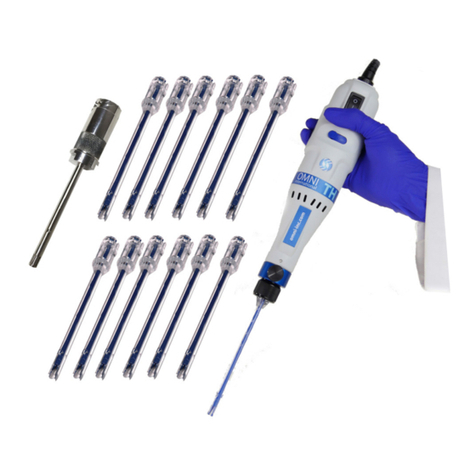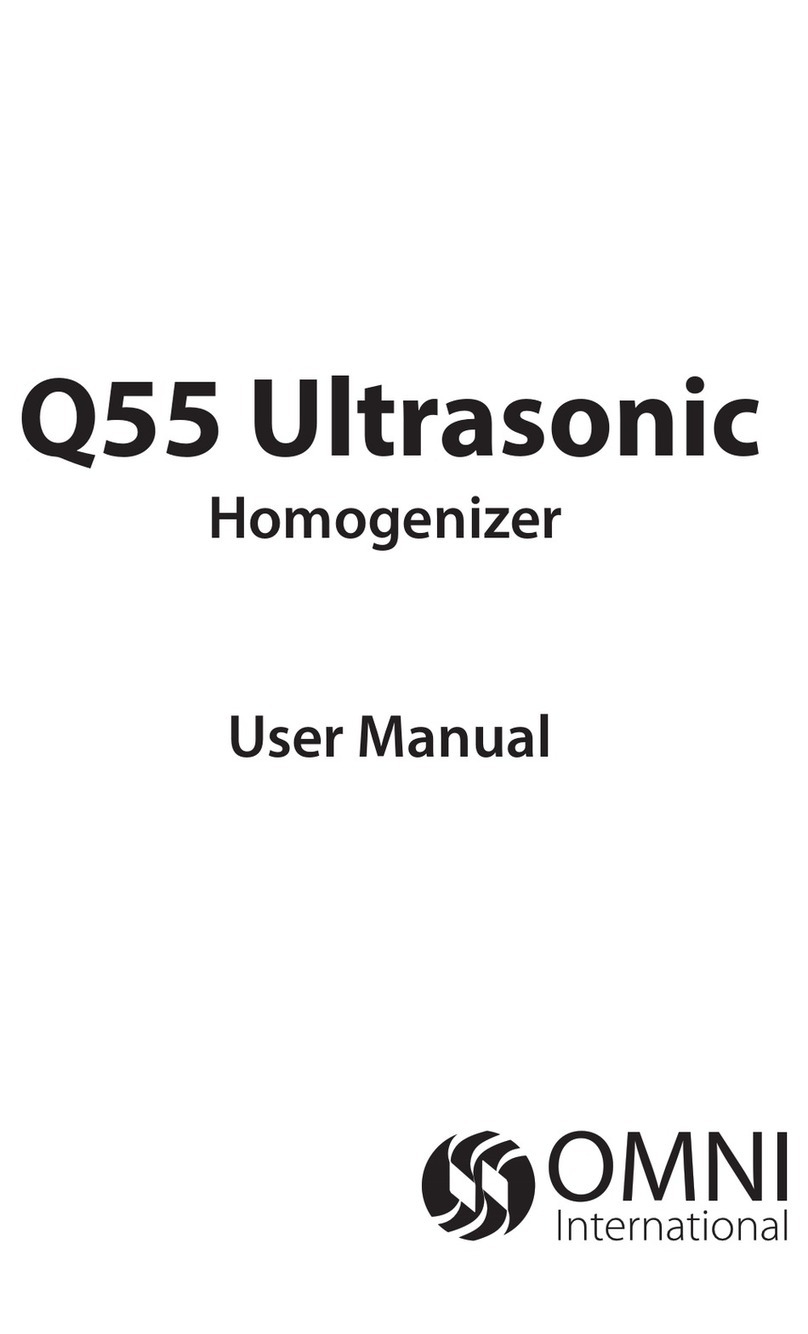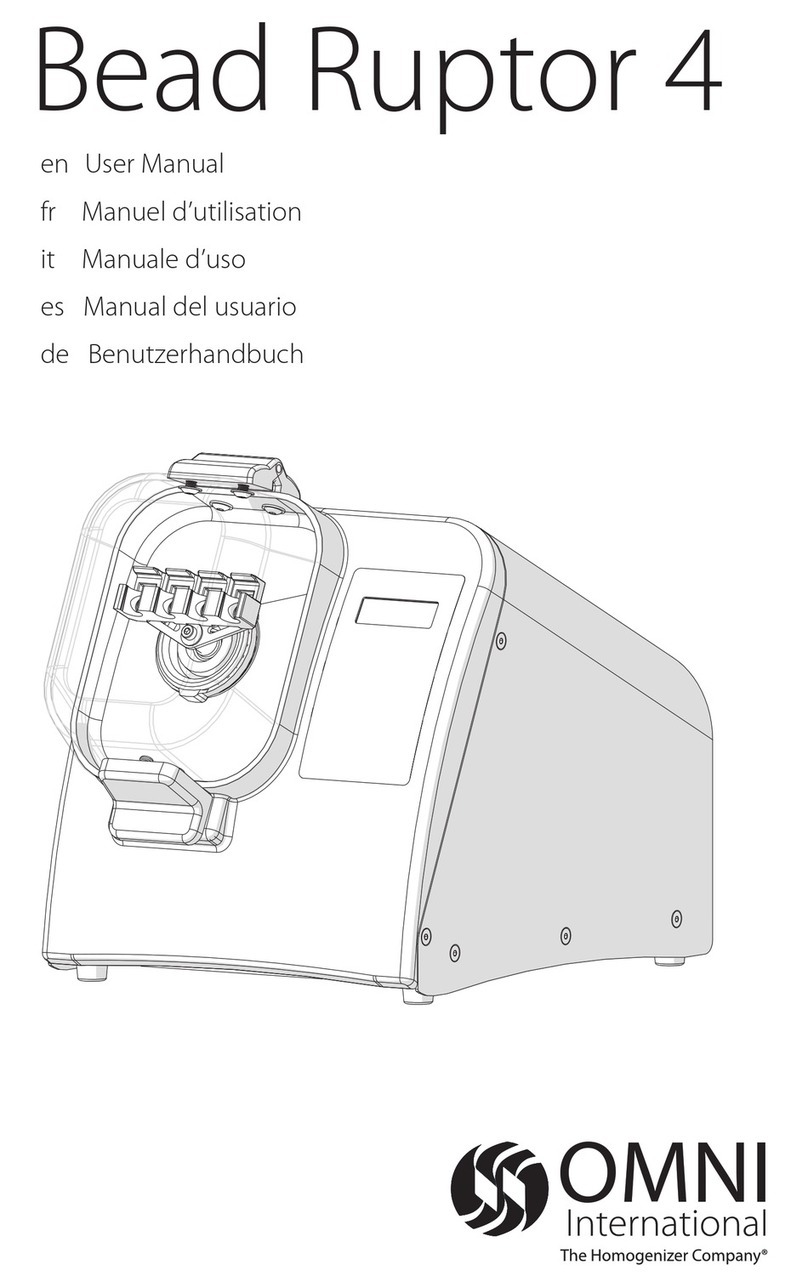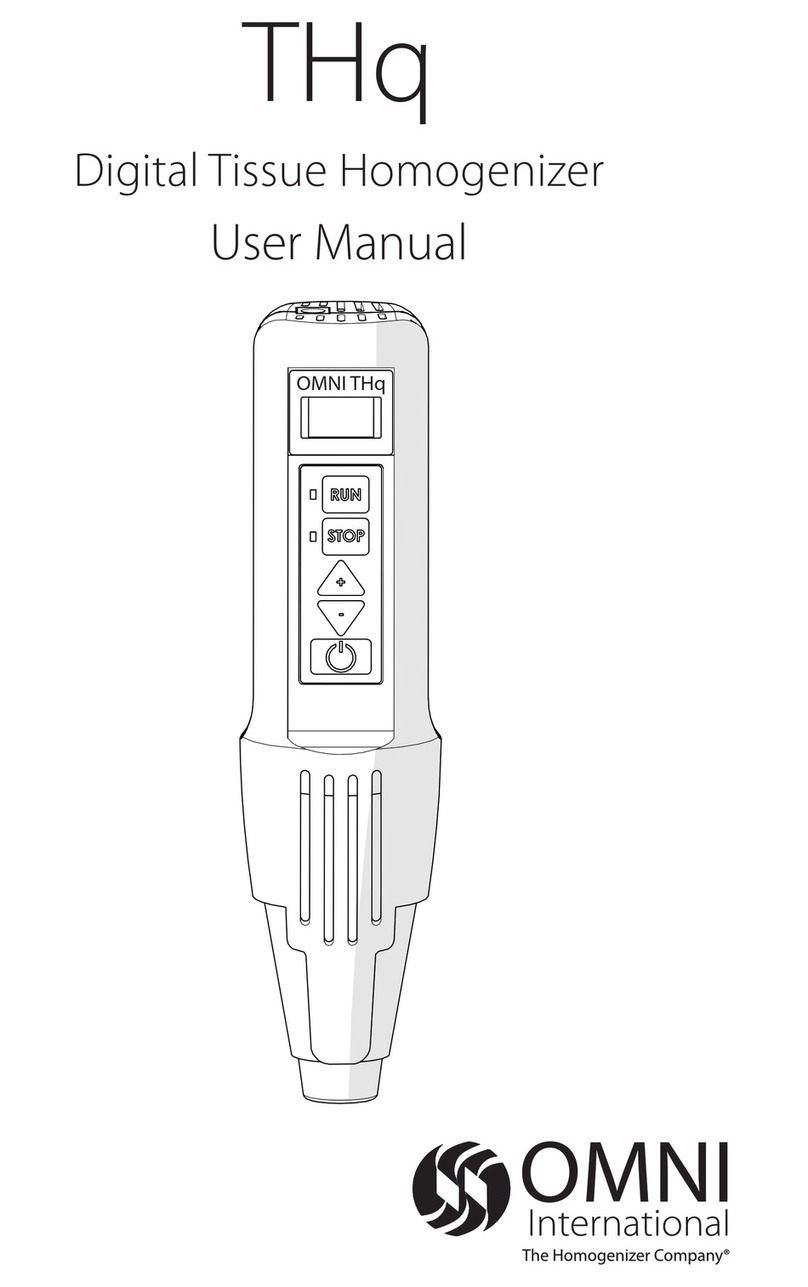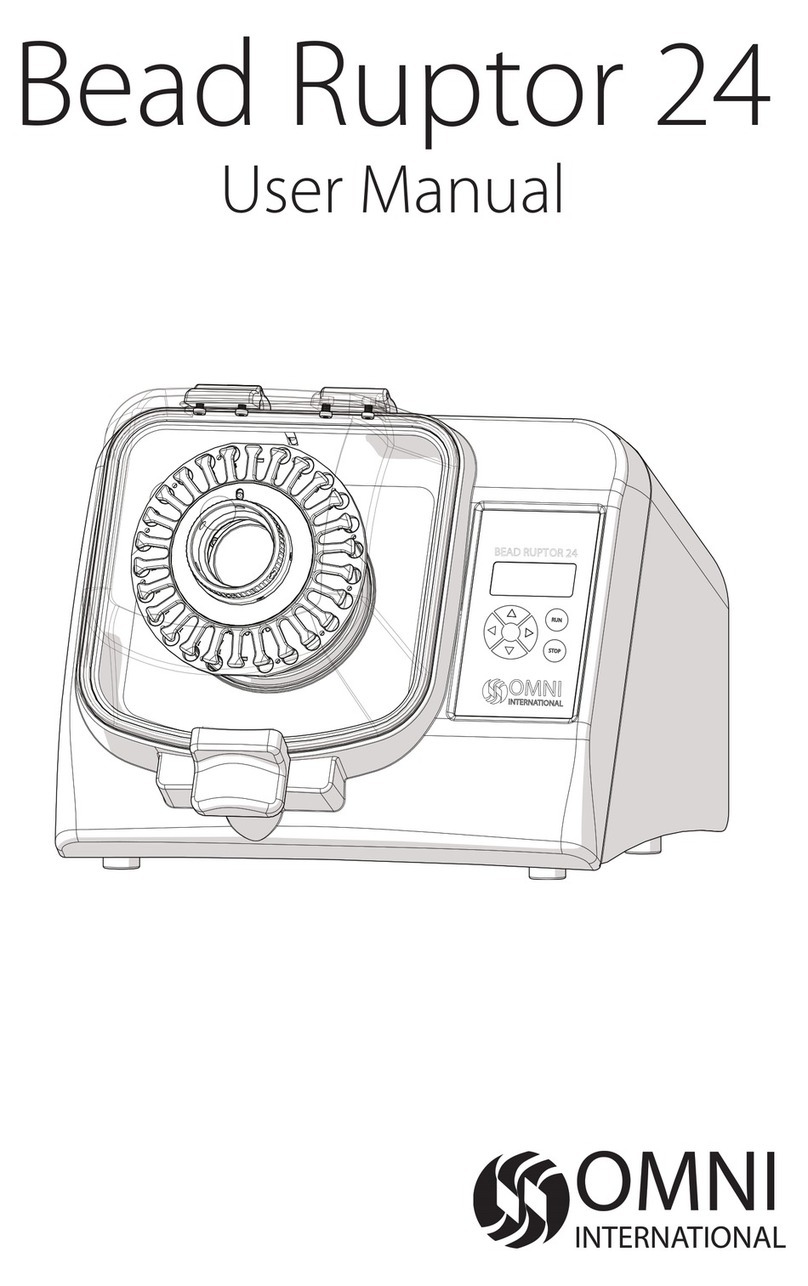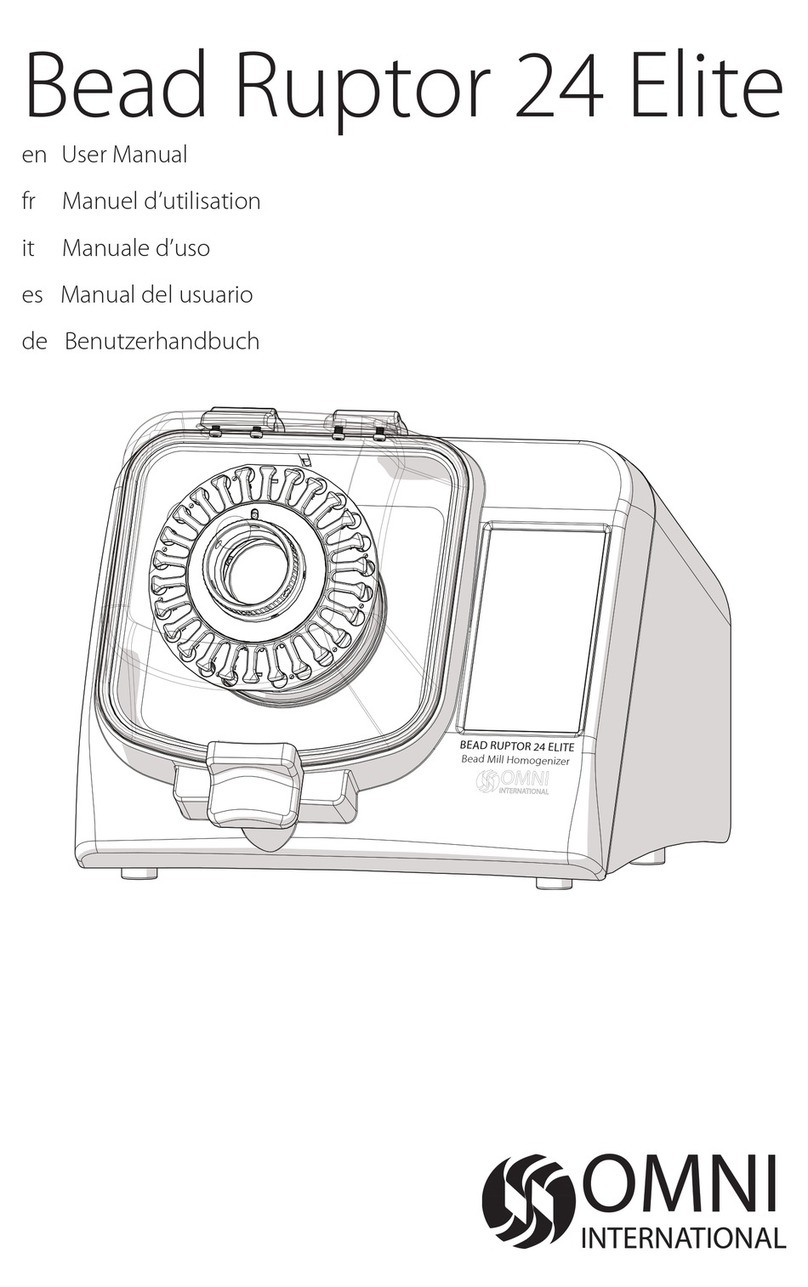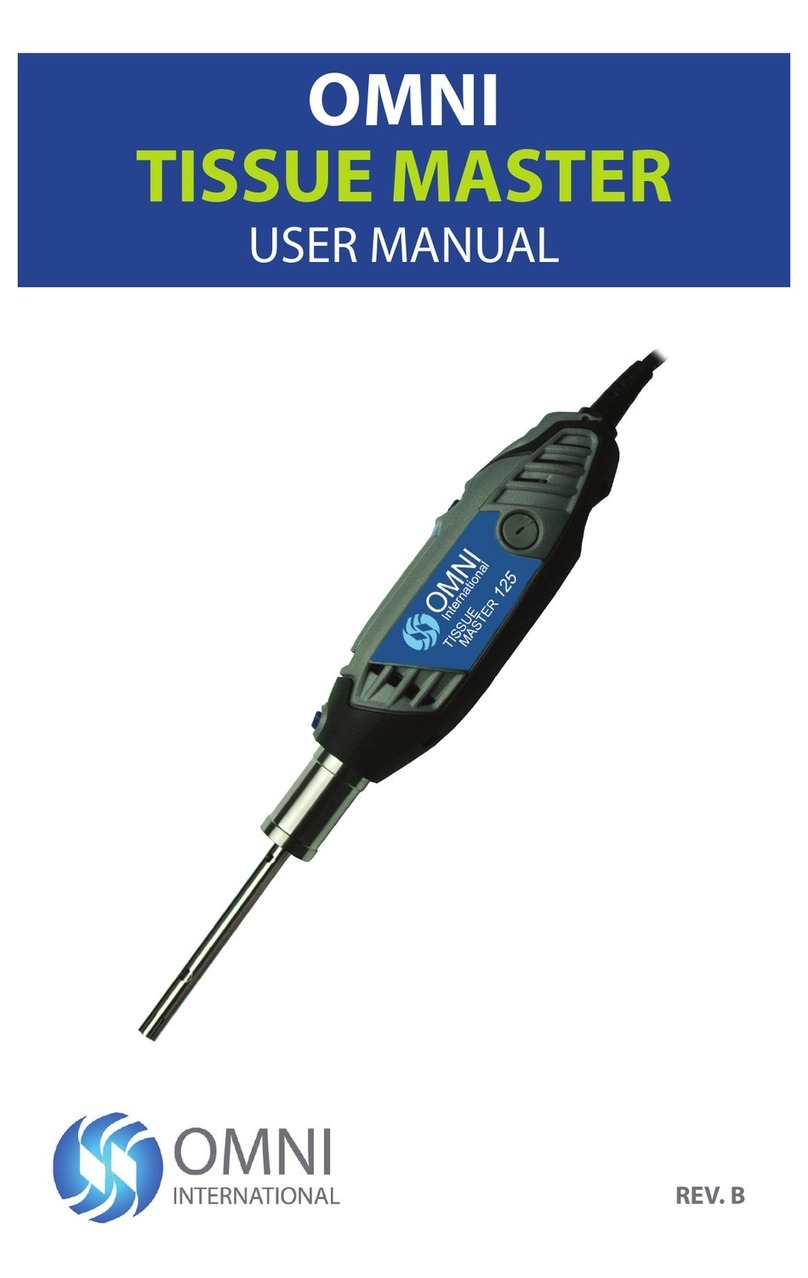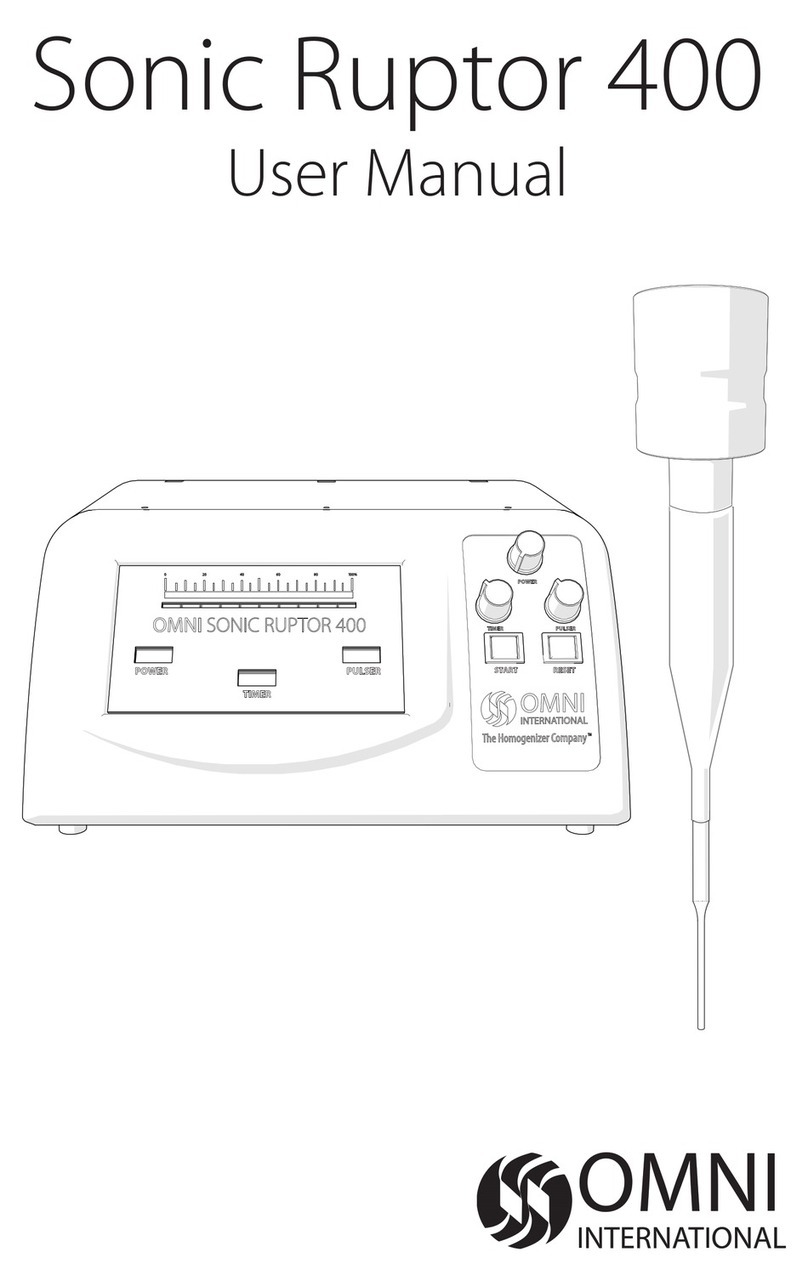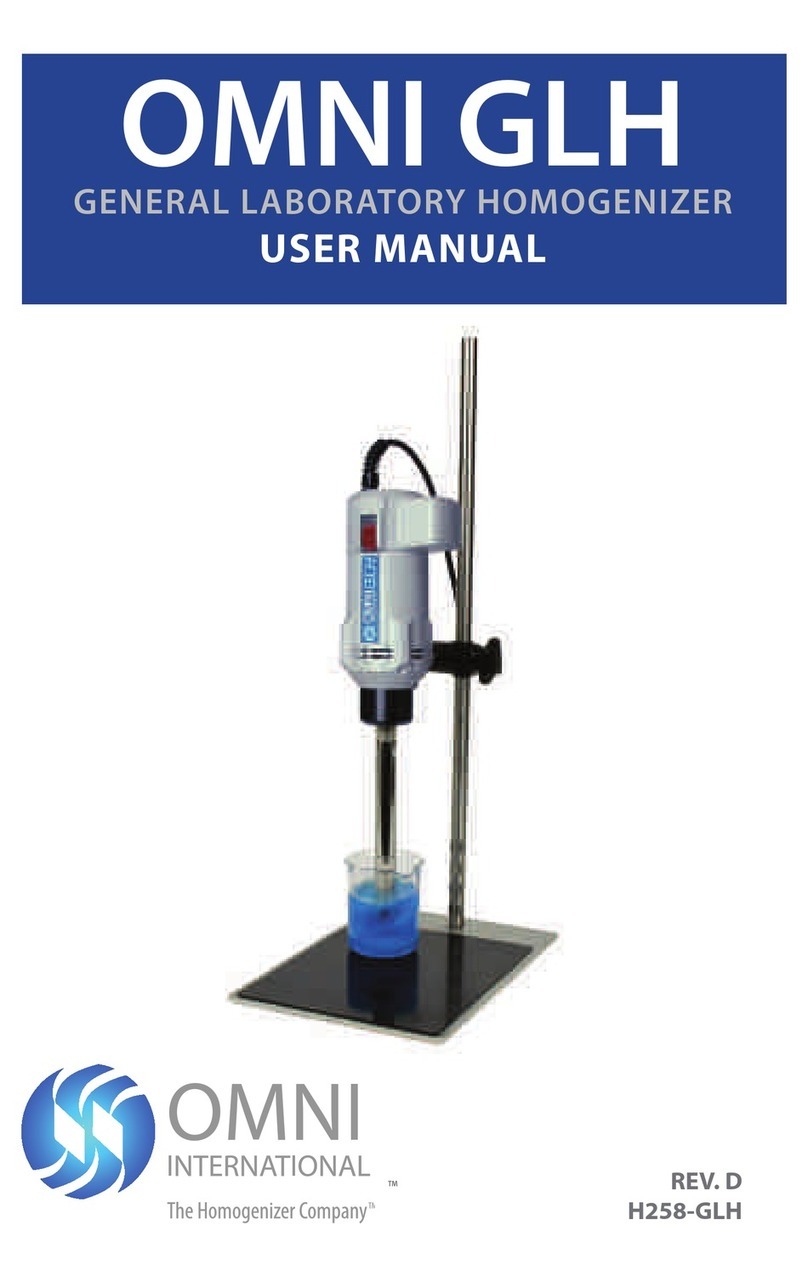This manual is a guide for the use of the Omni Mixer and Omni Macro Homogenizers and accessories.
Data herein has been veried and validated. It is believed adequate for the intended use of the instrument. If the
instrument or procedures are used for purposes over and above the capabilities specied herein, conrmation
of the validity and suitability should be obtained, otherwise Omni International does not guarantee results and
assumes no obligation or liability. This publication is not a license to operate under, or a recommendation to
infringe upon, any process patents.
Notes, cautions, and warnings within the text of this manual are used to emphasize important and critical
instructions.
This Omni International product is warranted to be free from defects in material and workmanship for a period
of THREE YEARS from the date of delivery. Omni International will repair or replace and return free of charge any
part which is returned to its factory within said period, transportation prepaid by user, and which is found upon
inspection to have been defective in materials or workmanship. For the rst 90 days, both parts and service are
without charge. For the balance of the period, parts will be provided but service will be charged at established
labor rates. This warranty does not include normal wear from use; it does not apply to any instrument or parts
which have been altered by anyone other than an employee of Omni International nor to any instrument which has
been damaged through accident, negligence, failure to follow operating instructions, the use of electric currents
or circuits other than those specied on the plate axed to the instrument, misuse, or abuse. Omni International
reserves the right to change, alter, modify, or improve any of its instruments without any obligation whatsoever to
make corresponding changes to any instrument previously sold or shipped.
THE FORGOING OBLIGATION IS IN LIEU OF ALL OBLIGATIONS AND LIABILITIES
INCLUDING NEGLIGENCE AND ALL WARRANTIES OF MERCHANTABILITY OR OTHERWISE, EXPRESSED OR IMPLIED
IN FACT OR BY LAW, AND STATE OUR ENTIRE AND EXCLUSIVE LIABILITY AND BUYERS EXCLUSIVE REMEDY FOR
ANY CLAIM OF DAMAGES IN CONNECTION WITH THE SALE OR FURNISHING OF GOODS OR PARTS, THEIR DESIGN,
SUITABILITY FOR USE, INSTALLATION, OR OPERATION. OMNI INTERNATIONAL WILL IN NO EVENT BE LIABLE FOR ANY
SPECIAL OR CONSEQUENTIAL DAMAGES WHATSOEVER, AND THEIR LIABILITY UNDER NO CIRCUMSTANCES WILL
EXCEED THE CONTRACT PRICE FOR THE GOODS FOR WHICH LIABILITY IS CLAIMED.
- READ ALL INSTRUCTIONS BEFORE USING.
- SAVE THIS OWNER’S MANUAL.
The Omni Mixer and Omni Macro has been engineered for economical functionality as well as safety; however, basic
safety precautions and common sense must always be demonstrated when using any electrical product. DO NOT
attempt to modify any part of the Omni Mixer or Omni Macro. If you experience problems with or have questions
about your Omni Mixer or Omni Macro, contact your authorized dealer or call Omni International at 800-776-4431
or 770-421-0058.
- DO NOT allow the machine to be submerged in any liquid.
- DO NOT use in any setting other than an indoor laboratory.
- DO NOT plug power cord into an incorrect outlet.
To reduce the risk of burns, electrocution, re, or injury:
- Use this product only for its intended purpose as described in this booklet. DO NOT use attachments not recom-
mended by the manufacturer.
- DO NOT operate the product if it is damaged in any way.
- Keep this product away from heated surfaces.
WARNING: Keep all housings in place and in working order. DO NOT use the motor in a dangerous environment. DO
NOT force the unit to do a job that it was not designed to do.
NOTE: If you experience excessive vibration, heat, or bearing wear, please contact technical support.
WARNING: DO NOT process pathogenic material in an open container, since aerosols created during normal pro-
cessing could be inhaled by the operator.
CAUTION: To prevent damage to the drive mechanism, never operate the motor without a sealed chamber assem-
bly or generator probe installed.
CAUTION: Never operate the motor with the generator probe (or sealed chamber assembly) partially attached to
the coupling adapter.
NOTE: If you experience excessive vibration, heat, or bearing wear, please contact technical support.
WARNING: The Omni Mixer or Omni Macro must be operated with the chamber assembly resting on a table top
or on the bottom of a cooling container to prevent rotating blades from being exposed if the chamber assembly
becomes disengaged from the motor, and to minimize the possibility of a broken seal.
CAUTION: To prevent damage to the drive mechanism, never operate the motor without a sealed chamber assem-
bly or generator probe installed, or the ex rubber coupling removed from the motor.
WARNING: DO NOT modify the plug or cord that is provided. Damaged or worn power cords should be repaired or
replaced immediately by a qualied electrician.
WARNING: Keep all housings in place and in working order. DO NOT use the motor in a dangerous environment. DO
NOT force the unit to do a job it was not designed to do.
WARNING: Reduce the risk of unintentional starting. Make sure that the switch is in the“OFF” position before plug-
ging in the motor.
Should this product ever require service, please contact
Omni International at 1-800-776-4431
